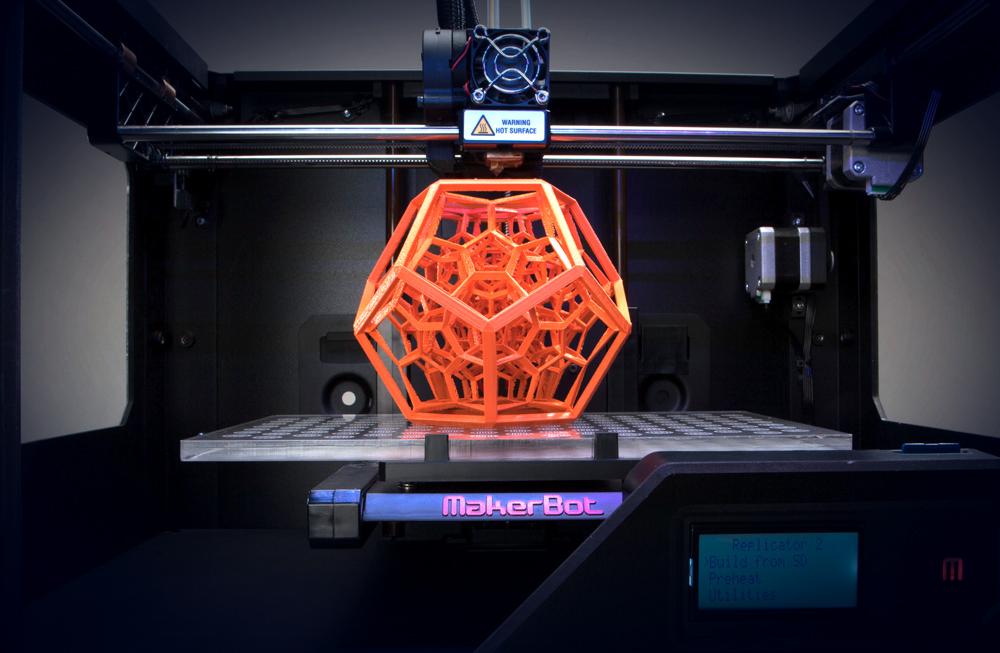The 3D printing movement has really exploded over the last two years. 3D printers have gone from obscure devices, which only a handful of tech geeks have heard about, likely from various Youtube videos posted a  couple of years ago, to a technology that the majority of American’s know exists. The next step will be mainstream adoption. The true definition of “mainstream adoption,” that I am using is, “the period in which a majority of the population has used a 3D printer or 3D printing service in some way or another.”
couple of years ago, to a technology that the majority of American’s know exists. The next step will be mainstream adoption. The true definition of “mainstream adoption,” that I am using is, “the period in which a majority of the population has used a 3D printer or 3D printing service in some way or another.”
In my opinion we are still a few years away from the average Joe or Betty, expecting a Makerbot Replicator or Cubify Cube under their Christmas trees. There are still a few issues impeding the widespread adoption of 3D printing. Below I have outlined four key impediments the market must overcome before 3D printing is considered mainstream. This could take as little as 18 months, or as long as 6-7 years, depending on how things progress.
Price:
Currently your average FDM based 3D printers from established companies sell for around $1300. This is a lot of money to spend on a machine which you may not be sure how to use, or even know why you’d use it. In order for this technology to go mainstream, high quality, cheap printers must come to market. We have already seen this slowly taking place. This month M3D launched their Kickstarter project for The Micro 3D printer, which  costs just $299. We will have to wait and find out if the low price point is sustainable to the company, and how well the device performs. The $299 price point, which is the same price point many high end smartphones come to market at contracts, is just about where we have to be in order to spur mainstream adoption. If the product under performs though, that will certainly not ignite the market. I do believe that over the next 24 months, we will continue to see prices fall substantially. Upstart companies like M3D will force the established players like MakerBot and 3D Systems to offer entry level printers to the masses, at prices most can afford.
costs just $299. We will have to wait and find out if the low price point is sustainable to the company, and how well the device performs. The $299 price point, which is the same price point many high end smartphones come to market at contracts, is just about where we have to be in order to spur mainstream adoption. If the product under performs though, that will certainly not ignite the market. I do believe that over the next 24 months, we will continue to see prices fall substantially. Upstart companies like M3D will force the established players like MakerBot and 3D Systems to offer entry level printers to the masses, at prices most can afford.
Speed:
Speed is a major complaint you hear from most users of 3D printers. A shoe sized object can take up to eight hours to print, even on some of the better printers on the  market today. What’s the point of the Star Trek replicator if you have to wait several hours to have an object materialize in front of you? The same goes for a 3D printer. Speeds will be slow to progress, as there are some physical limitations to how fast a 3 axis printer can move, but gradual increases and new technologies for printing will eventually lead to much faster FDM printers. How long this will take will be key to how fast the market develops. If printer manufacturers could develop machines capable of printing out a high quality smartphone case within a few minutes, or a shoe sized object within an hour, mass adoption would take place almost immediately.
market today. What’s the point of the Star Trek replicator if you have to wait several hours to have an object materialize in front of you? The same goes for a 3D printer. Speeds will be slow to progress, as there are some physical limitations to how fast a 3 axis printer can move, but gradual increases and new technologies for printing will eventually lead to much faster FDM printers. How long this will take will be key to how fast the market develops. If printer manufacturers could develop machines capable of printing out a high quality smartphone case within a few minutes, or a shoe sized object within an hour, mass adoption would take place almost immediately.
Ease to Use/Design:
This is an area which has definitely seen progress over the last couple of years. As more individuals purchase printers, manufacturers get the feedback needed to create interfaces which are much more intuitive. A 3D printer should work no differently than a typical 2D printer from a user standpoint. Ideally you want users to be able to click “print” on a screen, and start printing.
Additionally, most people who purchase a 3D printer want to join the maker movement, creating their own 3D designs to print out, rather than only relying on 3D models posted at Thingiverse and other design repositories. CAD software can be intimidating to most. We need CAD beginner’s software on the market, directed towards those who have absolutely no 3D modelling experience. We are certainly seeing progress in both areas, the hardware/software interfaces, as well as simplicity within CAD design software. This progression needs to continue a bit more though.
Availability:
As I mentioned, 3D printing will go mainstream once the majority of the population has access to buy a 3D printer, or has access to use one. The three criteria above all discussed in-home, consumer level machines. Just as important to mainstream adoption will be the ability for those without a printer to access one via a local 3D printing service. Already we have seen a gradual increase in the number of stores offering services. In fact, Staples is testing such a service out at 2 of their U.S. stores, and UPS is doing something similar. As more and more chains begin offering 3D printing services, access to these devices will increase almost exponentially. Demand will have to drive the implementation though, meaning additional applications for 3D printing will have to emerge.
We are certainly well on our way to mainstream adoption of 3D printing. It will ultimately be up to the manufacturers, the software developers, and the service outlets to determine how quickly we get there. Discuss this story, and give your feedback on it, at 3DPB.com
Subscribe to Our Email Newsletter
Stay up-to-date on all the latest news from the 3D printing industry and receive information and offers from third party vendors.
You May Also Like
Precision at the Microscale: UK Researchers Advance Medical Devices with BMF’s 3D Printing Tech
University of Nottingham researchers are using Boston Micro Fabrication‘s (BMF) 3D printing technology to develop medical devices that improve compatibility with human tissue. Funded by a UK grant, this project...
3D Printing Webinar and Event Roundup: April 21, 2024
It’s another busy week of webinars and events, starting with Hannover Messe in Germany and continuing with Metalcasting Congress, Chinaplas, TechBlick’s Innovation Festival, and more. Stratasys continues its advanced training...
3D Printing Webinar and Event Roundup: March 17, 2024
It’s another busy week of webinars and events, including SALMED 2024 and AM Forum in Berlin. Stratasys continues its in-person training and is offering two webinars, ASTM is holding a...
3D Printed Micro Antenna is 15% Smaller and 6X Lighter
Horizon Microtechnologies has achieved success in creating a high-frequency D-Band horn antenna through micro 3D printing. However, this achievement did not rely solely on 3D printing; it involved a combination...






























